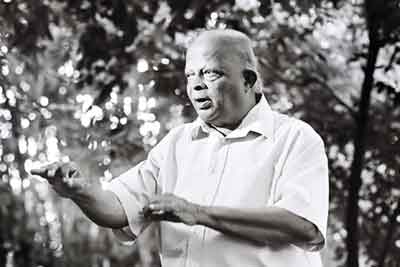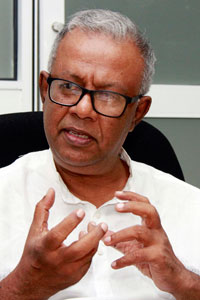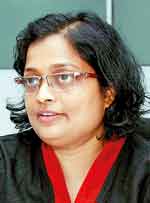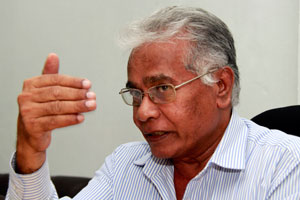Golden memories of the Master’s music on the silver screen

The festival will highlight Khemadasa’s unique musical scores in landmark Sinhala films
“Like Gandhi, Khemadasa believes that one must keep the doors and windows of one’s house open so that the winds from the four corners of the earth will blow through it- yet never allow oneself to be taken off one’s feet which should remain firmly planted on your own soil. He has therefore boldly used techniques, forms and instruments from the west and east in expressing himself yet his music is rooted in our folk music,” reflects composer and conductor, Lalanath de Silva in ‘Khemadasa the Winds of Change’ (Master- The Musical Sailor of Timeless Seas).
Lester James Peries further qualifies: “Premasiri Khemadasa has succeeded in solving the dilemma that faces all Asian artistes – how to exploit Western forms and techniques and still preserve one’s own national identity..” Be it Udumbara bambaru evith, himin sere piyawida or Golu hadawatha theme music, it is essentially a Sri Lankan flavour that this maestro of our times stamped in all his creations.
In an effort to revisit the imprint Master Khemadasa left on the silver screen, his daughters, Gayathri and Anupa Khemadasa have organised an ambitious ‘film festival’ from October 20 to 24 at the Tharangani Cinema of the National Film Corporation. The festival will feature Golu Hadawatha, Wasana, Bambaru Evith, Lokuma Hinawa, Siri Medura, Nidhanaya and Hansa Vilak. The festival, which is open to the public free of charge commemorates the ninth death anniversary of Khemadasa.

A scene from Hansa Vilak

Dr.-Sunil-Wijesiriwardene
“Thaththa was essentially a people’s man, this is why we are opening the festival to the public with no financial gains,” says Gayathri Khemadasa, a versatile musician herself. The festival devoid of any fanfare hopes to evoke memories of a few selected landmarks of Sinhala cinema in which the ‘Khemadasa footprint’ is unmistakable. “These films are on par with any globally acclaimed cinematic work and the festival is also a celebration of all creativity entails from directors to all other artistes,” says Gayathri, adding that they are not merely about ‘the touch of a Master’s hand’ but an integral part of the cultural heritage of ours. The public will also experience the first digital format of a movie through Hansa Vilak.
Gayathri urges increased public consciousness towards conserving cinematic landmarks. The five-day festival is also an effort at enabling music lovers to enjoy the original work of the Master. Critical of the distortion of certain work of her father’s in certain quarters, Gayathri is ambitious to rekindle the ‘original’ timbres her father laboured over.
Yet, the challenge of confining the film festival to just seven films of Master Khemadasa’s career which spanned nearly five decades since his debut through Sobana Sitha in 1964, was made “heartbreakingly easier” says Gayathri emotionally. “There were many more films to which my father contributed musically which we wanted to bring back through the festival, unfortunately, some were not archived properly so they were not of screening quality and some, the custodians were reluctant to share,” reflects Gayathri who lobbies for a robust film archiving mechanism in the country before cinematic national treasures are lost forever.
Applauding the veteran film-maker and dramatist, Dharmasiri Bandaranayake, Chairman, National Film Corporation (NFC), Sithendra Senaratne and Research Officer, NFC Deeptha Bandara and the Khemadasa

Gayathri Khemadasa
Foundation for their contribution in making the festival a reality, Gayathri calls for a more culture-sensitive collective effort to sustain all forms of art in the country.

Dharmasiri Bandaranayake. Pix by Indika Handuwala
Ever since the demise of Premasiri Khemadasa, Sri Lankan cinema had been “searching for a lost rhythm,” observes Dharmasiri Bandaranayake whose maiden cinematic creation of Hansa Vilak is applauded as a landmark of Sinhala cinema’. “The song hemin sere piyawida in Hansa Vilak and Master are synonymous,” says the veteran artiste who lauds Khemadasa as a musical genius who could seam the plot and characters of a film with his magical musical weave. “It was Master Khemadasa who introduced theme music to Sinhala cinema,” says Bandaranayake citing Golu Hadawatha. If there was one musician who could overcome the ‘limitations’ of an artiste on stage of screen and override the ‘sounds technician’, it was Khemadasa, asserts the senior artiste who still marvels at Maestro’s ‘fine judgment’. “He didn’t inundate a creation with music either, he made sure that the best of talent was harnessed for his work,” adds Bandaranayake. His own work including Hansa Vilak and Thunweniyamaya to which the iconic musician rendered his touch, testifies to this.
Translating the indigenous sources of music to a globally comprehensible language, Master Khemadasa’s musical wand extended to complexities and sensibilities of a nation as well, points out Dr. Sunil Wijesiriwardena who is credited for his lyrics in Khemadasa’s operatic watershed of Manasa Wila. “Whatever his canvas was, Master would render something novel and dramatic to a creation and most importantly he made a global dialogue possible with all his creations,” maintains the scholar.
Festival schedule
October 20 – Golu Hadawatha (6.30 p.m)
21 – Wasana (2.30 p.m) & Bambaru Evith (6.30 p.m)
22 – Lokuma Hinawa (2.30 p.m.)
& Siri Medura (6.30 p.m)
23- Nidhanaya (6.30 p.m)
24- HansaVilak (6.30 p.m)
(public invitations to be collected
for Hansa Vilak on site.)


